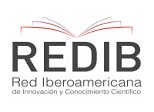Use of Geometric Morphometry to Establish Biological and Environmental Contrasts in Fish Populations of Teaone River
DOI:
https://doi.org/10.69890/hallazgos21.v4i1.332Keywords:
Teaone River; Geometric morphometry; Andinoacara blombergi, Brycon atrocaudatus, Brycon dentex, and Rhoadsia minor fish species.Abstract
Unlike traditional morphometry, geometric morphometry is allowing direct relationships to be established between the pure form of organisms and their relationship with the environment in which they live, in such a way that changes in body shape could be used as indicators of changes in environmental conditions. From April to September 2017, three sections of the Teaone River, in Esmeraldas, were sampled: the upper zone at the level of the community of Morachigüe, the intermediate zone in the community of Tabiazo, and the lower zone at the level of the neighborhood of San Rafael, Esmeraldas canton. A total of 851 fish of four species were collected: Andinoacara blombergi, Brycon atrocaudatus, Brycon dentex and Rhoadsia minor. Through the use of geometric morphometry, significant differences could be observed, that is, changes in the shape of the body, mainly at the level of the snout, the cephalic region and in the height of the body; as there was a descent from the upper zone of the river, where there are better environmental conditions to the lower zone where there is greater environmental pressure; these changes are correlated mainly by an increase in temperature, turbidity, hardness and less dissolved oxygen. Changes in body shape were similar in the four species studied. This work shows the effect that the current conditions of the Teaone River have on life forms, specifically on fish.
References
Anastasiadi, D., Díaz, N., & Piferrer, F. (2017). Small ocean temperature increases elicit stage-dependent changes in DNA methylation and gene expression in a fish, the European sea bass. Scientific Reports, 7(1), 12401. https://doi.org/10.1038/s41598-017-10861-6
Andreoli, A., Mao, L., Iroumé, A., Arumí, J., Nardini, A., Pizarro, R., … Link, O. (2012). The need for a hydromorphological approach to Chilean river management. Revista Chilena De Historia Natural, 85, 339-343. https://doi.org/10.4067/S0716-078X2012000300008
Clabaut, C., Bunje, P. M. E., Salzburger, W., & Meyer, A. (2007). Geometric Morphometric Analyses Provide Evidence for the Adaptive Character of the Tanganyikan Cichlid Fish Radiations. Evolution, 61(3), 560-578. https://doi.org/10.1111/j.1558-5646.2007.00045.x
Ekaete, A. (2013). Preliminary studies of the condition factors in five tropical fish species of a coastal state, Lagos Nigeria. 5, 6. Recuperado de http://www.sciencepub.net/researcher/research0506/001_17604research0506_1_5.pdf
Food and Agriculture Organization. (2017). Ecología de las pesquerias fluviales. Recuperado de http://www.fao.org/docrep/003/X6853S/X6853S02.htm
García, A., González, J., & Habit, E. (2012). Caracterización del hábitat de peces nativos en el río San Pedro (cuenca del rio Valdivia, Chile). Gayana (Concepción), 76, 36-44. https://doi.org/10.4067/S0717-65382012000100004
Granda, J., & Montero, C. (2015). Aplicación de morfometría geométrica para la comparación de distintas poblaciones de guanchiche (Hoplias spp) en ecosistemas lénticos y lóticos del Ecuador. Recuperado de http://www.dspace.espol.edu.ec/handle/123456789/29740.
Green, B. S., & McCormick, M. I. (2005). O2 replenishment to fish nests: males adjust brood care to ambient conditions and brood development. Behavioral Ecology, 16(2), 389-397. https://doi.org/10.1093/beheco/ari007.
Herbas, R., Rivero, F., & Gonzales, A. (2006). Indicadores Biologicos Calidad Agua. Recuperado de https://es.scribd.com/doc/58999749/indicadores-Biologicos-Calidad-Agua
Malato, G., Shervette, V. R., Amaya, R. N., Rivera, J. V., Salazar, F. N., Delgado, P. C., … Aguirre, W. E. (2017). Parallel body shape divergence in the Neotropical fish genus Rhoadsia (Teleostei: Characidae) along elevational gradients of the western slopes of the Ecuadorian Andes. PLOS ONE, 12(6), e0179432. https://doi.org/10.1371/journal.pone.0179432
Musilová, Z., Rican, O., Ricanová, S., Jansta, P., Gahura, O., & Novak, J. (2015). Phylogeny and historical biogeography of trans-Andean cichlid fishes (Teleostei: Cichlidae). Senckenberg.
Musilová, Z., Schindler, I., & Staeck, W. (2009). Description of Andinoacara stalsbergi sp. n. (Teleostei: Cichlidae: Cichlasomatini) from Pacifi c coastal rivers in Peru, and annotations on the phylogeny of the genus. Recuperado de http://www.senckenberg.de/files/content/forschung/publikationen/vertebratezoology/vz59-2/02_vertebrate_zoology_59-2_musilova.pdf
Ortiz, M. (2016, enero 11). Caracterización de diatomeas como herramienta para el estudio de la calidad del agua del río Teaone (Thesis). Ecuador - PUCESE - Escuela de Gestión Ambiental. Recuperado de http://localhost/xmlui/handle/123456789/589
Rahel, F. J. (1986). Biogeographic Influences on Fish Species Composition of Northern Wisconsin Lakes with Applications for Lake Acidification Studies. Canadian Journal of Fisheries and Aquatic Sciences, 43(1), 124-134. https://doi.org/10.1139/f86-013
Soria, M., Rodiles, R., & González, A. A. (2011). Morfometría de las especies de Vieja (Cichlidae) en ríos de la cuenca del Usumacinta, Chiapas, México. Revista mexicana de biodiversidad, 82(2), 569-579.
Thompson, D.W. (1917). On growth and form. London: Cambridge University Press.
Torcida, S., & Perez, S. I. (2012). Análisis de procrustes y el estudio de la variación morfológica. Revista argentina de antropología biológica, 14(1), 131-141.
TULSMA. (2003). Libro VI de Calidad Ambiental: Anexo 1 Norma de Calidad Abiental y Descarga de Efluentes: Recurso Agua. Decreto Ejecutivo No. 1589.
Wijkmark, N., Kullander, S., & Barriga, R. (2012). Andinoacara blombergi, a new species from the río Esmeraldas basin in Ecuador and a review of A. rivulatus (Teleostei: Cichlidae), 23, 117-137.
Youson, J. H., Holmes, J. A., Guchardi, J. A., Seelye, J. G., Beaver, R. E., Gersmehl, J. E., … Beamish, F. W. H. (1993). Importance of Condition Factor and the Influence of Water Temperature and Photoperiod on Metamorphosis of Sea Lamprey Petromyzon marinus. Canadian Journal of Fisheries and Aquatic Sciences, 50(11), 2448-2456. https://doi.org/10.1139/f93-269
Zelditch, M. L., Swiderski, D. L., & Sheets, H. D. (2012). Geometric Morphometrics for Biologists: a Primer. Saint Louis: Elsevier Science.
Downloads
Published
How to Cite
Issue
Section
License
Los artículos enviados a la Revista Científica Hallazgos21 deberán ser totalmente originales e inéditos.
Los autores son los responsables de los textos y las imágenes incluidas en los artículos y no necesariamente reflejan el pensamiento de la editorial o de la Pontificia Universidad Católica del Ecuador, Sede Esmeraldas (PUCESE).
Los autores disponen cederle a la Revista Científica Hallazgos21 todos los derechos inherentes para la edición, publicación y distribución o divulgación del mismo.
Se autoriza a las revistas firmantes de los acuerdos de Encuentros de Revistas Latinoamericanas para reproducir en parte o totalmente los artículos con la sola mención de la fuente claramente señalada.







